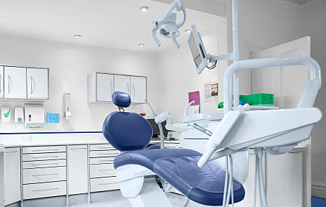Crucial Steps to Take After You Acquire Your New Practice
You’ll want to make your transition as smooth as possible.
Congratulations – you’ve just purchased your new dental practice and eager to start working and making money. But before you move forward, it’s important to ensure that you plan out your transition properly so that your journey is nothing but smooth sailing.
With that said, below are several things you should do prior to closing:
1. Contracts transfers: Make sure any material contract in the practice is transferred to you. Remember that the seller should have disclosed all these contracts to you in the offer drafting stage. Any contract that was not included or that you did not approve taking over should be excluded, and the seller should be responsible for cancelling it and paying any associated costs.
Some of these contracts include:
- Practice software contract or agreement
- Telephone and internet provider – this should include the practice phone numbers, websites and email addresses
- Security alarm
- Hydro and gas providers
- Premises cleaning services
- Equipment service contracts
- Yellow pages, or any other marketing contracts
2. Schedule a staff meeting: Transitioning is a very critical time for the practice both now and in the future. By now, most if not all of the staff members are aware that the practice has been sold. They are probably feeling nervous and insecure. You need to meet with them immediately and comfort them, so they know you are as good of an employer as the previous owner. You need to let them know that you will continue to work as a team and let them know that you will treat them well and in return you expect them to perform and continue the growth of the practice in order to take it to the next level.
3. Insurance: Most lenders will require you to have commercial & liability insurance. If you have not purchased this yet, now is the time to do so. This will protect you and your employees from any liabilities or additional costs due to slip-ups, theft, etc.
4. Letter of introduction: This is the time to prepare a letter of introduction to be mailed to the patients. It is always advisable to plan the letter in a way that introduces you as a new professional dentist joining the practice.
Mention that it is a priority of yours to provide superb service to the patients, and to give the previous owner time to relax after all of their hard-working years. This is better than telling patients that you are the new owner and that the previous owner sold the practice to you, etc. You want to promote the idea of continuity so that patients feel there will be minimal interruption to the services and treatments they will receive.
5. Business number: Make sure that you or your accountant has applied to receive a business number. This will typically be done automatically by the CRA when you have registered a new professional corporation. You require an employer number in order to pay your staff on time and to make the proper payroll deductions without any interruptions.
6. Point of sale equipment: By now, you should have your POS machine delivered, connected and up and running at your new practice. All payments should be going through your terminal with the terminal of the previous owner removed.
7. Accounts receivables: On the day of closing, make sure you print out a full list of all the accounts receivables for the previous owner. Keep track of this so you can pay the previous owner accordingly as per the agreement of purchase and sale. You will typically be expected to collect all of the A/R for the previous owner for a period of 90-120 days after closing.
Things to keep in mind
Be aware that patients of the practice did not choose you as their dentist. You as the new owner were imposed on them; therefore it is very important to practice extra caution in dealing with them and their concerns. Make it a priority to keep the current practice productivity consistent, and keep things running as they are now for at least 6 months. Do not rock the boat. The fewer changes there are, the more comfortable the patients will feel.
Also, ensuring no changes in the staff is crucial at this stage. It is enough for the patients to meet a new dentist – you don’t want them to see new staff as well. With that much adjustment, patients may then think it’s time to look for a new office.
It is advised not to commence any renovations to the practice yet, even if it is very much needed. Once you have worked there long enough to become familiar with the patients and the needs of the practice, you will be able to design your updates and renovations in a way that fits your practice, your team and your patients best.
Finally, be careful and conservative in your treatment plans at this stage. Continue with similar policies as the previous owner. Patients are always weary of those who recommend new and costly treatments, as they are still new owners – and they’ll be likely to question why the previous dentist did not recommend similar treatments. All changes should be gradual, and should ideally be made after the patients have gotten to know you and feel comfortable with you.
Patient attrition after a sale is usually 5% - 15%. You can minimize attrition by abiding to the points above.
Alan RustomLet Meridian Sales & Appraisals assist you on your journey...
Ready to sell your dental practice, or ready to acquire a new one? Our team of experts would be happy to help. Call or e-mail us today!

